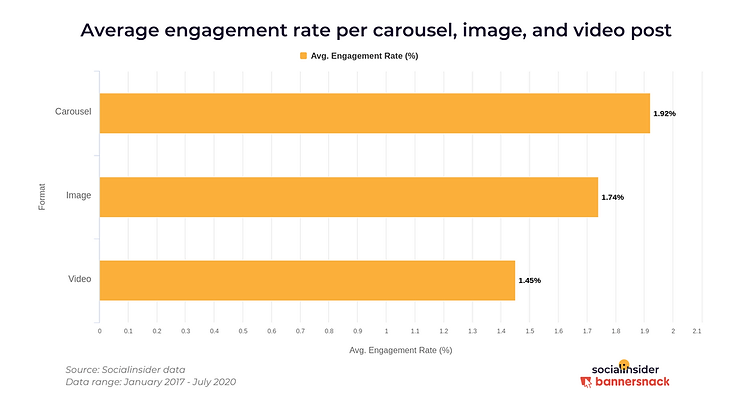Instagram has been one of the most used social media platforms ever since its launch in 2010. It was known to be a photo-sharing platform and over the years, it slowly evolved into a multi-function app with its newly added features such as Instagram Stories, Instagram Video, Reels, and IGTV.
However, in July, the app switched into a video-sharing platform and is no longer positioning its identity as the photo-sharing app that we’ve all come to know and love.

This leads Instagram to be direct competitors with other video-sharing apps, like YouTube and TikTok. Hence, as Nuffnang’s Senior Partnership Relations Specialist, here’s my point-of-view on what I anticipate to come out of this major switch on Instagram.
With some familiarity with the ins and outs of Instagram, I think that this shift is quite interesting because there is no doubt that our generation has become more addicted to short-form video content, all thanks to TikTok. Hence, catering to this demand could make Instagram an even more addicting app with an unlimited flow of video content to engage with. With that being said, be prepared to spend countless hours scrolling through Instagram for the rest of your days amidst the pandemic. Besides that, with more video content, I foresee that there will be an increasing amount of excited users as many Instagrammers enjoy hopping quickly onto the variety of video trends.
However, with the removal of static postings, we would be swarmed with video content every time we scroll through our Instagram feed. Without the balance of static postings, one could feel overwhelmed. When Instagram was only a photo-sharing app, many users enjoyed it as it demands less attention and time. Users were able to scroll silently, spending less than a minute to double-tap on posts. No doubt that Instagram’s aim would be to increase a longer usage time spent on the app, but consumers are always on the move and barely have time to stick around for videos with a busy schedule.
Moreover, with Instagram having an increased similarity to TikTok, users would start preferring one over the over, making an unnecessary need for competition. Remember when Snapchat wanted to become Instagram, Twitter, AND YouTube? That didn’t work out well did it? Imagine logging into TikTok, with the expectation to view video content, then logging into Instagram right after and face the realization that both apps feel exactly the same. Being a user, I would rather have the option to experience completely different functions in a completely different app. Let’s not mention the amount of repeated content that we’ve seen! With so many platforms to keep up with, content creators lack time to continue producing new content for one platform, let alone two or three. This is why we see contents being reposted on multiple platforms because the demand is too overwhelming.
Apart from my point of view alone, let’s take a look at how this would affect influencers and the influencer marketing industry. Each and every influencer is different, which means that each influencer has their own preferences in creating content. Certain influencers enjoy creating all sorts of video content and couldn’t care less about how perfect their Instagram feed looks. Whereas other influencers prefer static postings as it is less cluttered and has a pretty aesthetic. This transition towards a completely videocentric platform would force many influencers to learn how to create engaging content to stand out from the constant stream of videos.
In terms of posting engagement, past studies have shown that Instagram Carousel obtains the highest engagement rate, followed up by Instagram Photo and Instagram Video. But with Instagram no longer prioritizing static posts, this also means that the Influencers’ content is not being pushed out to their audience as actively as it should, because Instagram’s algorithm is too busy suggesting video content to its audience.

There is, of course, a silver lining for our Influencers. With video content being in demand, there is a consistent flow of brands who want to explore Influencers that are able to curate these contents for the brand.
Videos offer conversation and it is much easier to share a product’s unique selling points with a demonstration. As a consumer myself, I would prefer watching videos as it is a more digestible method of absorbing information and it is more entertaining.
Besides creating product demonstration type of videos, there is potential that there will be increased usage of the Instagram Live feature, which converts into an IGTV after the live session has ended. Brands could start hiring influencers to host live selling sessions to encourage live selling since Instagram already has the new “shop” feature.

Now let’s talk Pros & Cons
Pros:
- One of the pros is as an influencer, your content would look more genuine in videos and you can gain more trust from your audience because they are able to see you act or react from a video. Videos create a form of communication exchange and your audience gets to know you better since there is more to your personality than just looking at a photo of you.
- Videos also have more longevity and lasting power especially in memory, since it takes a longer time to consume as well. You can expect higher impressions on your video insights as there are chances that your audience would definitely come back and rewatch your content.
Cons:
- One of the obvious cons of creating video content is the amount of time needed to plan out the video flow and edit it to perfection. Living in a fast-paced world, some influencers might not have enough time to film a video as it would require multiple reshoots per scene, and before you know it, you have just spent hours creating one video. Unless you excel in time management or filming, this could be a challenge for you.
- Being an influencer, you might even need to invest in filming equipment such as cameras, tripod stands, ring lights, etc that can help to enhance your video quality leading to better engagement. Also, if editing is not your forte, you might consider hiring a videographer and all of these could add up your costs of production.
Times are changing and to be significant in the influencer marketing industry, we need to ride along with the wave. To stay relevant, I would highly recommend influencers to improve their video creation and editing skills as this would come in handy soon. You can check out online courses from SkillShare, YouTube, or even catch quick tutorials from TikTok or Instagram Reels to learn new techniques. Get ready to step out of your comfort zone and let’s look forward to new innovations! To learn more ways on how to further improve your content curation skills, follow us on Instagram: @NuffnangAsia! See you there.